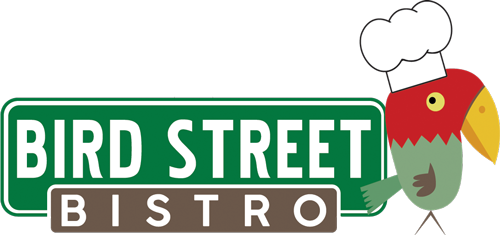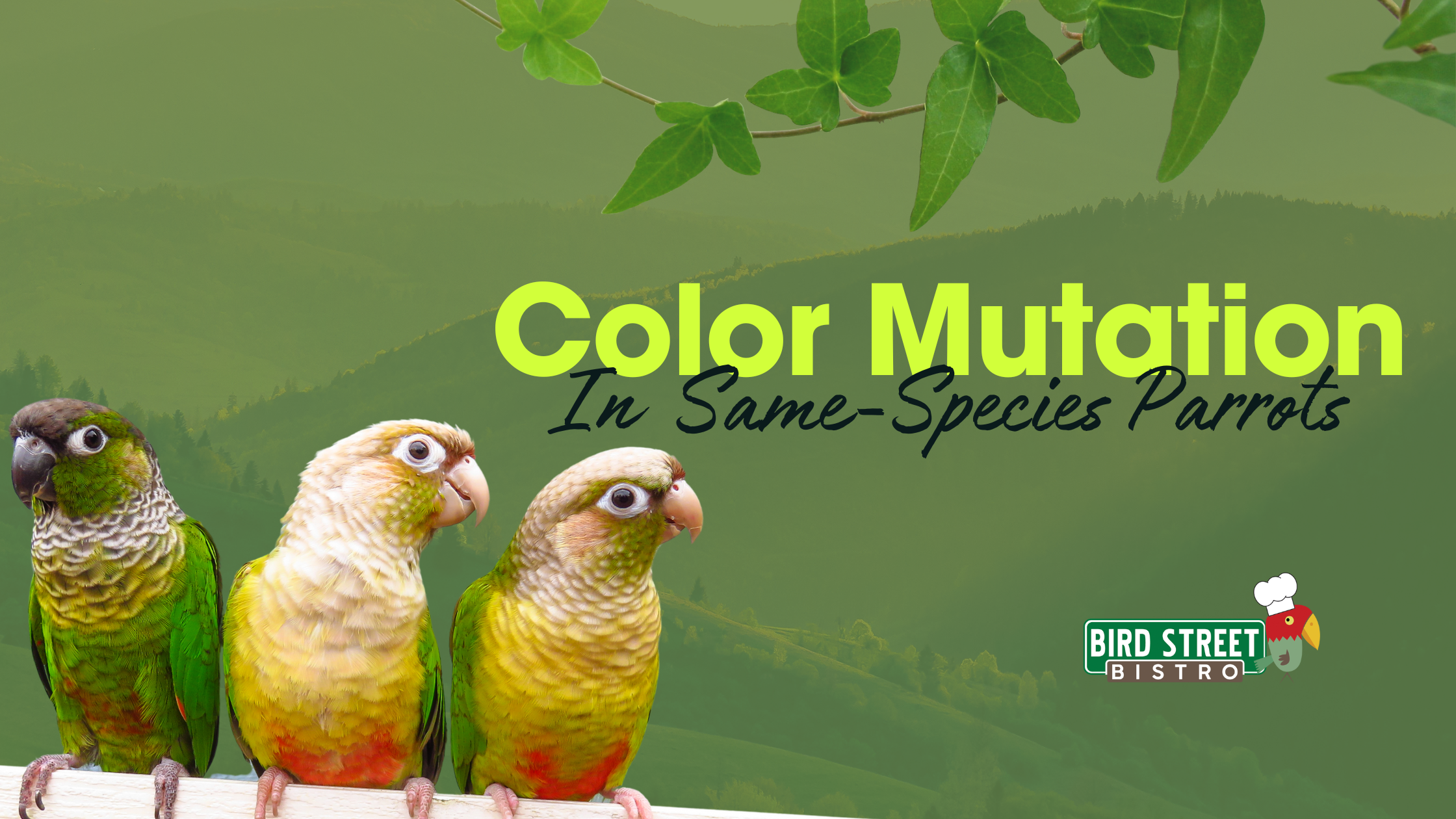Color Mutation in Same-species Parrots
When I first tossed the idea around of getting a Green-cheeked Conure, I did what most people do and I decided I wanted to read as much as I could about what to expect if I get one as well as what sort of supplies I would need. What I didn’t expect was that I was about to dive into a deep maze of misinformation and outdated advice in the form of poorly researched articles and social media “expert” advice. Among the madness, I recall seeing an article listing the top 5 kinds of Conures to get as a pet based on personality. Upon reading, I found that two of the top 5 listed were separated as “Pineapple Conure” and “Turquoise Conure”. These are simply different color mutations of a Green-cheeked Conure and not different species. Yet, whoever wrote the article didn’t seem to know this as each paragraph describing them claimed they had different temperaments and social needs. So, where is the confusion coming from? First, we need to understand what a color mutation is.
What is a color mutation?

For this article, I will be using the Green-cheeked Conure as an example, but you can apply this discussion to others where we see different color mutations. I’m going to keep it somewhat simple but there is a lot more information out there if you’re interested in the specifics.
A mutation occurs when there is a change in the DNA sequence of a cell. These changes can lead to traits that are different from what we would normally see in a species in its wild population. A color mutation is a mutation that affects how an animal’s colors develop. If you were to travel to South America to see how a Green-cheeked Conure lives, you would see their typical, normal green colors. This is how they evolved in order to fit their environment. But if you were to walk down to your local pet store, you might see Conures of different colors like yellow and red, turquoise and more. (Example left - credit www.avianresources.com)
Color mutations can occur spontaneously which is rare, or they can happen through deliberate breeding in captivity. The latter is where we begin to see more of that variety of colors in some domestic parrots like Conures, Budgies and Cockatiels. By carefully choosing which birds to breed and having a detailed knowledge of their genetic line, a breeder can predict what color a bird will most likely be and aim for a specific result. This is called selective breeding. A color mutation can happen in many species of animals and it tends to happen naturally at a low rate. That creates a rarity which means the breeders can charge more for those colors, so there is incentive for breeders to try and produce those colors in the birds that they sell.
How are color mutations selectively bred?

By knowing not only what genes the parents carry, breeders can select and breed the birds they want to get the desired result. Genes can be recessive, dominant and even sex-linked. Dominant genes tend to overrule recessive genes making it more likely that the trait from that gene will be produced. You also only need one dominant gene from one parent for this to take place. In order to get a recessive trait, you have to have one copy of that gene from each parent - so they both must have that gene. Sex-linked genes mean that those genes are linked to whether or not the carrier is male or female.
One popular color mutation among Green-cheeked Conure enthusiasts is the turquoise color mutation. It is a beautiful combination of turquoise and blueish-green feathers. Let's say we want to breed one. In order to get that result, we need to know some important things. Firstly, the turquoise gene is recessive. That means that to get the recessive trait (turquoise color), the baby must receive two copies of the recessive gene - one from each of its parents. So we have to know that first and foremost both parents carry that specific recessive gene. Somewhere along the line, the turquoise mutation occurred in a Conure, and breeders, to create more, bred specifically for more of that result by making sure both parents were turquoise. But just because a Conure doesn't look like it has a specific trait, doesn’t mean it doesn’t carry that gene. That is why it’s important to know about the birds that are being bred and their genetic line.
While the color of a Conure or other species of parrot can vary, the color mutation of a bird does not change what species it is. Pineapple, yellow-sided, turquoise etc. all are Green-cheeked Conures. So if you’re unsure, check what specific species of bird you are looking at and not its color.
Do color mutations affect parrot personality and needs?

As we discussed, regardless of its color, a Green-cheeked Conure is still a Green-cheeked Conure. The same goes for Budgies, Cockatiels, and other parrots. Its color mutation does not inherently affect its temperament or change its behavior simply due to that mutation. That would be similar to saying that a human with freckles would make a better singer than someone without them. Choosing a pet parrot with specific color mutations should only be seen as an aesthetic choice.
What does affect a bird’s personality and needs is the combination of the genes it inherits from its parents that specifically affect behavior, its upbringing, the choices surrounding its care as it grows, and its environment. It is this combination of factors that determines what a bird’s personality will be. Ultimately, every parrot is different and should be treated as the individual they are and not what color they inherit, etc.
Regardless of a parrot's species or color, you can find healthy, delicious food choices in Bird Street Bistro's line of products. Check out our Rising Phoenix Parrot Tea!
- Choosing a selection results in a full page refresh.
- Press the space key then arrow keys to make a selection.


